NATURAL CAPITAL / THE STATE OF THE ENVIRONMENT
ECOSYSTEM SERVICES
THE NATURAL SYSTEMS THAT REGULATE EVERYTHING PROVIDING EQUILIBRIUM CONTROL AND A WHOLE LOT MORE
|
|
|
|
TO DO ... update images to be more relevant to the subject matter
|

|

|

|

|

|

|
Planet Earth / Water / Trees / Climate instability / Resource depletion /
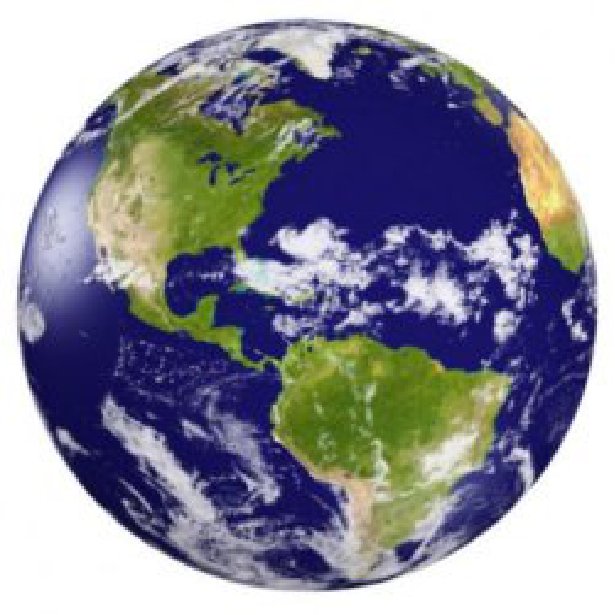
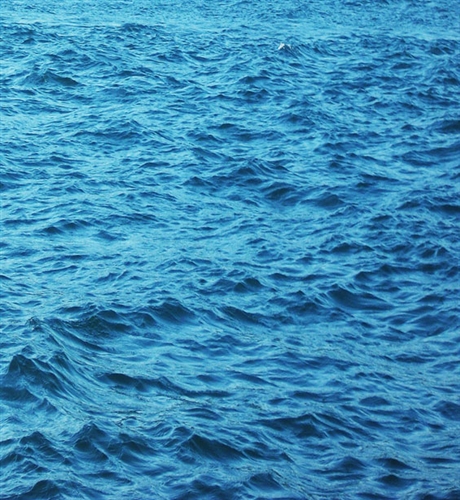

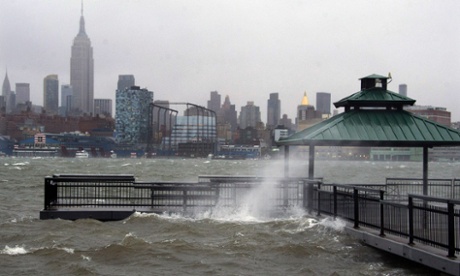

|
|
|
NATURE'S LIVING SYSTEMS
|
GO TOP
|
NATURE'S LIVING SYSTEMS
The living systems of nature ... including human beings ... are extremely complex and quite amazing. Despite the amazing growth in knowledge during the last century very little is known about the deep intricacies of these natural living systems. What is now known is that they are immensely important for sustaining the enviro-socio-economic system that is key to quality of life and standard of living.
|
|
Ecosystem Services
About Ecosystem Services ... What are ecosystem services and why do we need them?
Some of the many life-support services provided every day by wetlands, forests, grasslands, and oceans include:water filtration; climate regulation; nutrient cycling; pollination; pest control; disease regulation; flood control; and more
|
Open file 8781
|
Nature ... Secrets of flocking revealed
Secrets of flocking revealed ... the simple explanation of how a flock of birds function
|
Open file 945
|
Davey Tree i-Tree software
Davey Tree developed the i-Tree software suite in partnership with several other organizations to better quantify and understand trees as a form of natural capital. i-Tree provides urban and community forestry analysis and benefit assessment tools, enabling the valuation of a tree’s impact on air and water quality, energy use, human health and more. This in turn enables Davey Tree’s arborists to educate clients on the value of their natural capital. #12711
'https://www.greenbiz.com/article/emergence-natural-capital-consciousness'
|
Open file 12711
Open external link
|
WATER / WETLANDS / CLEANING UP
An EcoSystem working naturally to maintain a world in balance
|

|
|
|
|
A 4-SEGMENT DESCRIPTION
Comprising PROVISIONING, REGULATING, SUPPORTING and CULTURAL
|
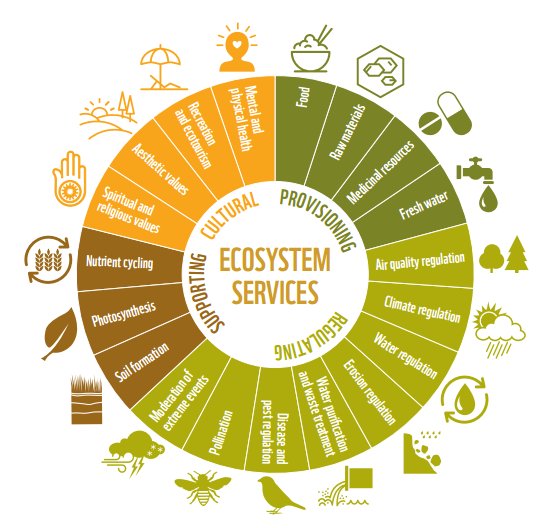
|
Provisioning
... Food
... Raw materials
... Medicinal resources
... Fresh water
Regulating
... Air quality regulation
... Climate regulation
... Water regulation
... Erosion regulation
... Water purification and waste treatment
... Disease and pest regulation
... Pollination
... Moderation of extreme events
Supporting
... Nutrient recycling
... Photosynthesis
... Soil formation
Cultural
... Mental and physical health
... Recreation and ecotourism
... Aesthetic values
... Spiritual and religious values
|
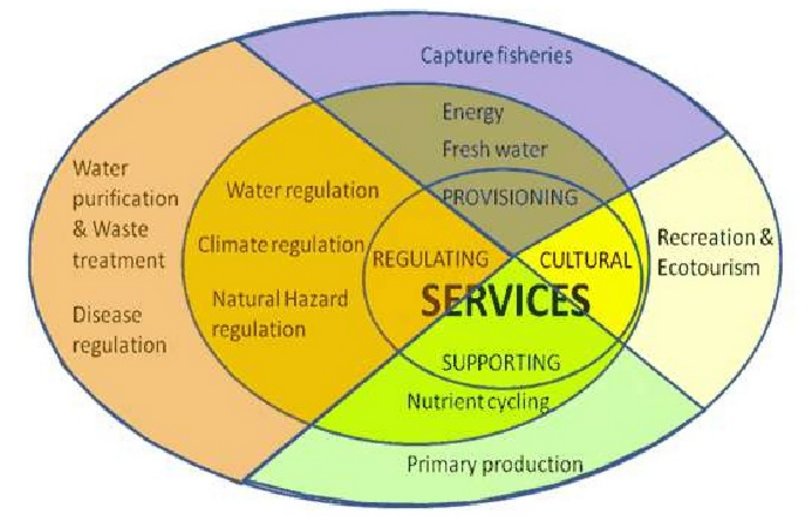
|
|
NATURAL CIRCULARITY
In Nature NOTHING goes to waste! CAPITALISM is hopelessly WASTEFUL
|
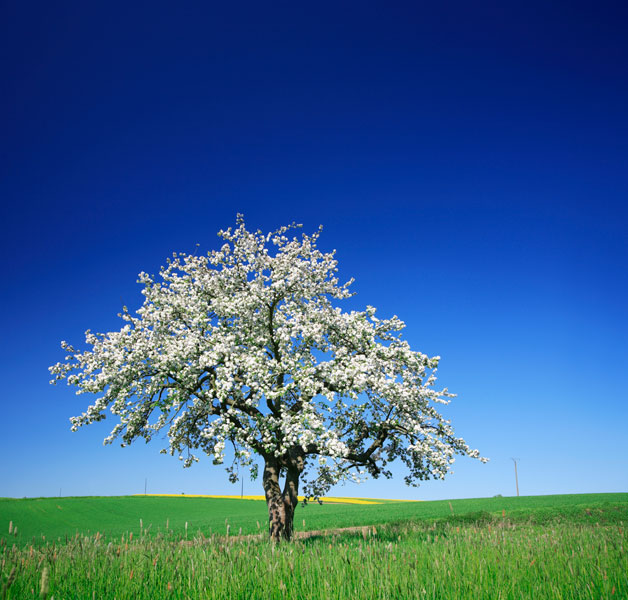
|
The Cherry Tree
A cherry tree produces thousands of blossoms which create fruit for birds, humans and other animals in an effort to grow one tree. The blossoms and fruit that fall to the ground aren’t waste, they are food for other systems and processes that nourish the tree and soil. It’s a question of design and eco-effectiveness, a question we should be addressing in our approach to life and manufacturing.
|
What are ecosystem services and why do we need them?
Manmade goods ranging in size and variety from microchips to Mack Trucks surround us in our daily lives. Similarly, we rely on manmade services such as electricity, heat, water, and the internet to conduct everyday tasks in the modern world.
Just as businesses manufacture both goods and services, so too does nature.
You are probably familiar with nature's goods -- the food, fuel and fiber that we use to produce the microchips and the Mack Trucks; but you might be less aware of nature's services.
Some of the many life-support services provided every day by wetlands, forests, grasslands, and oceans include:
water filtration
climate regulation
nutrient cycling
pollination
pest control
disease regulation
flood control
Why are ecosystem services being lost?
Unfortunately, as the global population swells by approximately 146 people every minute, the human strain on terrestrial, marine and freshwater ecosystems is causing some of nature's life support services to falter.
Watersheds scoured of vegetation by deforestation are losing their ability to filter water, wetlands chomped up by new developments are no longer able to control floodwaters when heavy rains hit, and the loss of natural habitat is causing the decline of wild pollinators essential to agriculture. Perhaps most perilous of all, the global thermostat is fluctuating (fueling extreme weather events) as the ability of forests and oceans to absorb heat-trapping gases is depleted.
Can we use a free-market economy help protect ecosystem services?
Hoping to call attention to the loss of nature's life support services and reverse this trend, scientists recently decided they would do three things:
First, they would give nature's services a name;
Second, they would measure them; and
Third, they would try to convince global society to pay for and invest in them.
The first step was fairly easy...the second and third steps are proving more difficult.
Step One: Define nature's services
In the late 1990s, a group of ecologists and economists collaborated on an effort to assign value to nature's services. In sum, they estimated that nature's services were worth some $33 trillion per year. Since the number was almost twice that of the total gross national products of all countries at the time ($18 trillion in 1997), the finding generated a global buzz and a generous dose of controversy. The term ecosystem services came into widespread use in the ensuing dialogue and, formalizing the term in a 1997 publication, the Ecological Society of America explained that 'ecosystem services', 'refers to a wide range of conditions and processes through which natural ecosystems, and the species that are part of them, help sustain and fulfill human life.'
While it is worth noting that nature's services, environmental services, ecological services, and ecosystem services all refer to the same set of services, ecosystem services is the most widely accepted of these terms and so is the one we use regularly on the Ecosystem Marketplace.
Step Two: Measure ecosystem services
Once ecosystem services had a name, the next step was to refine measurements of their quantity and value. In many respects, efforts to quantify ecosystem services are still in their infancy. Ecologists, nonetheless, have made huge strides toward effectively measuring ecosystem services in the last decade.
A paper published by Claire Kremen of the University of California at Berkeley, for instance, cited 13 scientific studies that quantified ecosystem services ranging from the dung burial of beetles to the carbon storage of trees. The first global survey of ecosystem services, the Millennium Ecosystem Assessment, was also completed in 2005, mapping the physical flow of ecosystem services throughout the world and tracing their connection to human well-being at a variety of scales.
Importantly, once you've located and measured services, valuing them becomes much easier. New research suggests that the value of greenhouse gas storage in some forests can be as high $2,200 per hectare. Similarly, a study of coral reefs in the Caribbean suggests that the aesthetic value of intact reefs may be worth just over $2 billion annually to the coral-based tourism industry.
Add it all up and Klaus Toepfer, former head of the United Nations Environment Program argues that, 'Conservation of habitats and ecosystems are cost-effective when compared with the short-term profits from environmentally damaging activities like dynamite fishing and sedimentation as a result of deforestation.'
Toepfer may well be right, but saying that something has value is much easier than actually convincing someone to pay for it, which is why step three is the hardest part in the fight to preserve the world's ecosystem services.
Step Three: Pay for and invest in ecosystem services
We have little trouble understanding that the manufactured service of electricity is valuable to us, so why don't we think of the ecosystem service of watershed filtration as being valuable too?
We pay for electricity because, when we don't, it gets shut off. A company has to produce it, and that company invests in the buildings and dams and turbines and computer systems that allow it to generate electricity. Without the company's investment in this infrastructure, no electricity would be produced. We understand that and so, grudgingly, we pay our electricity bills each month.
On the other hand, we don't pay for water filtration because, until very recently, we haven't needed to pay for it. Month after month, year after year, the root structures of trees and plants have been providing this service to us free of charge. We didn't pay, but the service continued.
Generally, we don't pay for things that can be had for free. And since no one is paying for ecosystem services, businesses haven't thought to invest in providing them.
To make matters worse, we have no problem valuing ecosystem goods like timber or gold or oil or food, so we tend to invest in extracting ecosystem goods even when it means destroying ecosystem services. This system of valuing nature leads to economic decisions favoring the consumption of ecosystem goods over the conservation of ecosystem services.
Once you really understand the problem, it is fairly easy to see where the solution lies – market forces must be realigned to invest in the production of both goods and services. If the global economy can be tweaked so that market forces reward investments in ecosystem services, a positive feedback loop will start in which increased investments in ecosystem services leads to increased production of ecosystem goods, eventually fueling both sustainable economic growth and ecological restoration.
While this solution seems fairly simple, it represents one of the biggest scientific, economic, and social challenges of our time.
Can we tweak the global economy so that it provides for sustainable resource consumption and the perpetual conservation of ecosystem services?
A global band of pioneers made up of scientists, economists, lawyers, policymakers, community leaders, businessmen, and individual consumers is currently trying to ensure that the response to this question is – yes.
Which ecosystem services does the Ecosystem Marketplace cover?
The Ecosystem Marketplace was created to tell the ongoing story of ecosystem service pioneers and, importantly, to provide them (and you) with the information services needed to build a revolutionary new economy that will pay for, and invest in, ecosystem services.
In particular, we cover payment programs for three kinds of ecosystem services:
Climate stabilization (carbon sequestration in trees, plants, and marine ecosystems);
Hydrological regulation (water quality, groundwater recharge, flood control);
Biological diversity benefits (scenic beauty, ecosystem resilience, pollination, pest control, disease control, etc).
We have tagged the different areas of our MarketWatch coverage simply as: carbon; water and biodiversity.
|
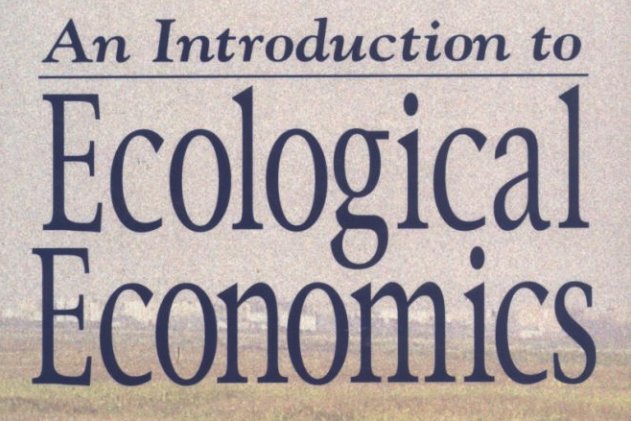
|
An-introduction-to-ecological-economics
A full length book authoried by Robert Costanza, Herman Daly and others in 1997.
'http://truevaluemetrics.org/DBpdfs/EcoSystem/An-introduction-to-ecological-economics.pdf'
|
Open PDF ...
An-introduction-to-ecological-economics
|
|
Consider these trends in SOCIO / ENVIRO / ECONOMIC STATE state over time
|
|
THE ACTUAL PAST
|
PLUS a NO CHANGE FUTURE
|
PLUS a BETTER FUTURE
|

SOCIAL CAPITAL and ECONOMIC CAPITAL have increased but NATURAL CAPITAL has been dangerously degraded. SOCIAL CAPITAL growth has been compromised by increasing inequality.
|

Continuing in this way is an unacceptable existential risk. There is a broad consensus that massive changes are essential.
|

A better way is possible. This requires a system that enables prosperity without growth and very process improved so that production does less environmental damage
|
More and more DEPLETION and DEGRADATION of NATURAL CAPITAL is UNSUSTAINABLE
MEASURE UNSUSTAINABILITY
PEOPLE, PRODUCTS, PLACES, ORGANIZATIONS
|
EPA-National Ecosystem Services Classification System NESCS 151109
Understanding the ways in which ecosystems provide flows of “services” to humans is critical for decision making in many contexts; however, the linkages between natural and human systems are complex and multifaceted. A well-defined framework for classifying ecosystem services is essential for systematically identifying and tracing these linkages.
The main objective of NESCS is to provide a framework that will aid in analyzing the human welfare impacts of policy-induced changes to ecosystems. In particular, it is intended to
support different types of policy impact analyses, such as cost-benefit analysis of environmental
regulations.
'http://truevaluemetrics.org/DBpdfs/EcoSystem/EPA-Ecosystem-Services-Classification-System-NESCS-151109.pdf'
|
Open PDF ... EPA-Ecosystem-Services-Classification-System-NESCS-151109
|
|
|
The Many Components of Ecosystem Services
|
GO TOP
|
|
Food
|
|
|
|
|
Raw materials
|
|
|
|
|
Medical resources
|
|
|
|
|
Fresh water
|
|
|
|
|
Mental and physical health
|
|
|
|
|
Recreation and ecotourism
|
|
|
|
|
Aesthetic values
|
|
|
|
|
Religious and spiritual values
|
|
|
|
|
Nutrient cycling
|
|
|
|
|
Photsynthesis
|
|
|
|
|
Soil formation
|
|
|
|
|
Air quality regulation
|
|
|
|
|
Climate regulation
|
|
|
|
|
Water regulation
|
|
|
|
|
Ecosystem regulation
|
|
|
|
|
Water purification and waste treatment
|
|
|
|
|
Disease and pest regulation
|
|
|
|
|
Pollination
|
|
|
|
|
Moderation of extreme events
|
|
|
|
Valuing environmental goods and services derived from the forests
Original Research Article ... Journal of Forest Economics, Volume 15, Issues 1–2, January 2009, Pages 1-14
Anne Stenger, Patrice Harou, Ståle Navrud
Abstract
The purpose of this special issue of the Journal of Forest Economics is to illustrate the use and limitations of environmental valuation in decision making related to the management of forest resources in Europe. The contributions to this special issue are organized following the conclusions of a workshop on forest valuations in Europe in Nancy, France (September 26–27, 2006). The aim is to (1) establish guidance protocols for forest valuation studies, (2) organize the estimated values in a database and (3) use the database for meta-analysis and value transfer. As these guidance protocols are firmly established and followed, and the frequency and quality of these studies increase, their increased use in the decision-making process should help the forestry sector in finding its just place in the sustainable development strategy for Europe.
$41.95
|
|
A meta-analysis of forest recreation values in Europe.
Marianne Zandersena.
a Research Unit Sustainability and Global Change (FNU), Hamburg University & Centre for Marine and Atmospheric Science (ZMAW), Hamburg, Germany
b International Max Planck Research School Earth System Modelling (IMPRS-ESM), Hamburg, Germany
c Economic and Social Research Institute, Dublin, Ireland
d Institute for Environmental Studies, Vrije Universiteit, Amsterdam, The Netherlands
e Department of Engineering and Public Policy, Carnegie Mellon University, Pittsburgh, PA, USA
Abstract
This paper presents a meta-analysis of forest recreation in Europe based on studies that have applied the travel cost method covering 26 studies in nine countries since 1979. We conduct the meta-regression with an increasing number of variables where level I includes only data available from the studies, level II aggregate socio-economic variables and level III site-specific characteristics such as diversity, fraction of open land and location. Data shows that consumer surplus varies between €0.66 per trip to €112 with a median of €4.52 per trip.
Results of the model with the best overall summary indicate that the application of the individual travel cost method, inclusion of opportunity cost of time and average distance travelled lead to increasing benefits whereas the year of the study and estimations from theses and dissertations reduce welfare estimates. Including exogenous variables shows that site attributes, GDP per capita and population density play a significant role.
|
|
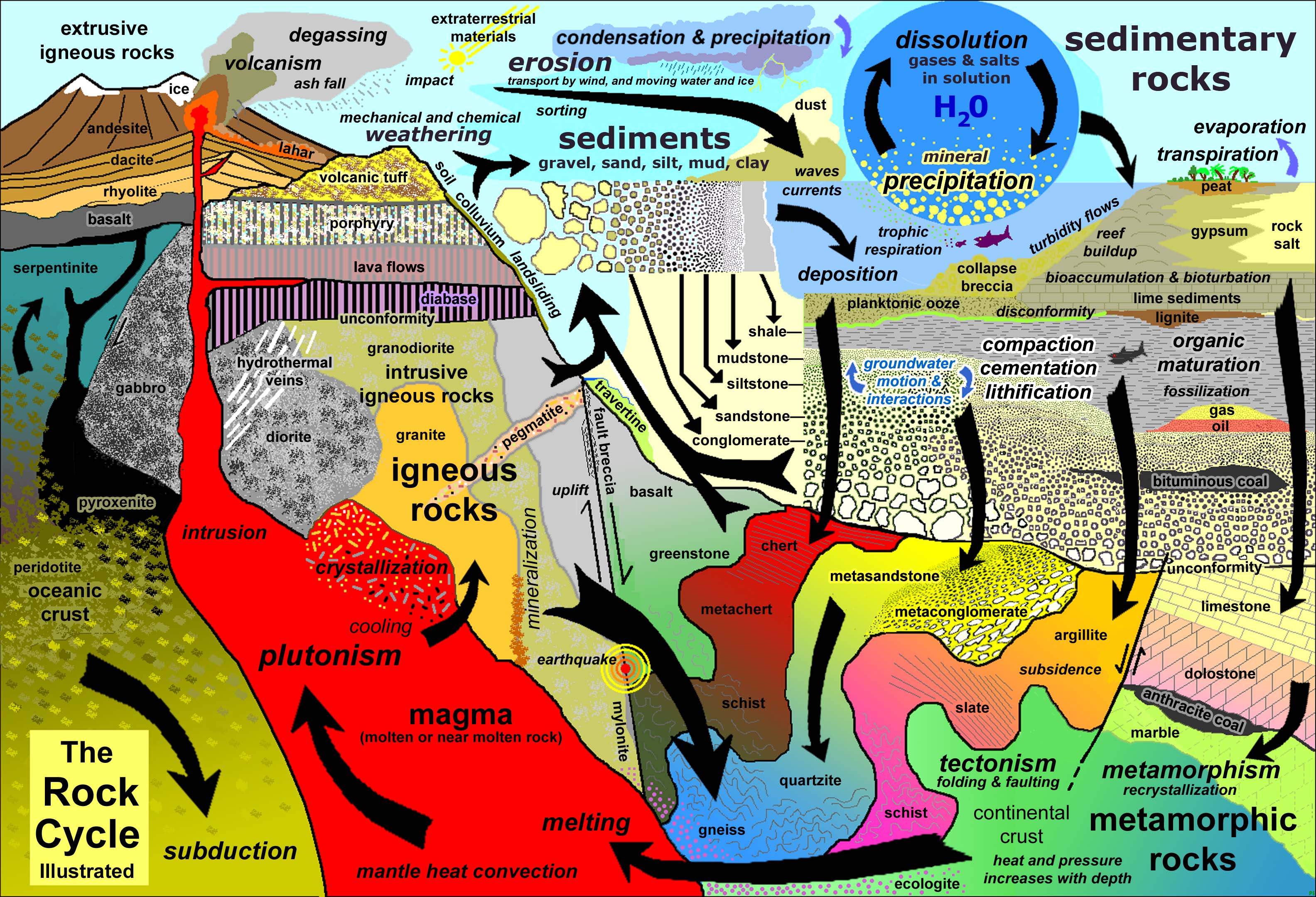
|
Processes that shape the earth's surface are ongoing, continuously or intermittently. The landscape is a reflection of many cumulative factors that have occurred over geologic time. Tectonic forces (faulting and folding) and volcanism raise the land's surface, whereas the interactions of gravity, air, water, and ice act to modify (weathering) and move (erosion) earth materials, wearing down the landscape. Long term climate changes also influences weathering and erosion processes, and can cause changes in sea level changes. Asteroid impacts, although infrequent in geologic history, have had dramatic impact on the development on the planet and the life it supports.
The rock cycle illustrates the formation, alteration, destruction, and reformation of earth materials, and typically over long periods of geologic time. The rock cycle portrays the collective system of processes, and the resulting products that form, at or below the earth surface.The illustration below illustrates the rock cycle with the common names of rocks, minerals, and sediments associated with each group of earth materials: sediments, sedimentary rocks, metamorphic rocks, and igneous rocks. On a grand scale, the rock cycle is integral to the processes associated with plate tectonics.
|
Ecosystem Services
|
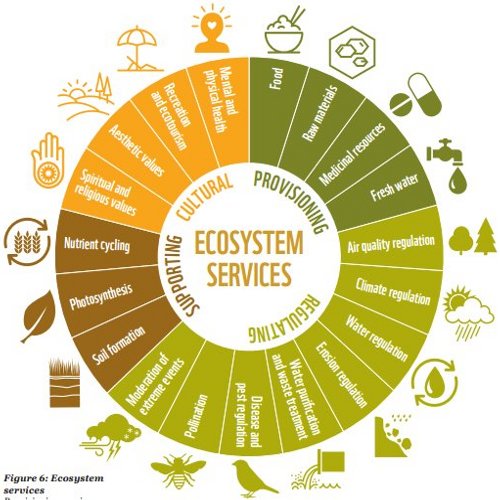
|
Ecosystem Services
The observed decline in species populations is inextricably linked to the state of the ecosystems that sustain them. Destruction of these ecosystems represents a risk not just to resident plants and wildlife, but to humans as well. For ecosystems provide us with food, fresh water, clean air, energy, medicine, and recreation. In addition, we depend upon healthy and diverse natural systems for the regulation and purification of water and air, climatic conditions, pollination and seed dispersal, and control of pests and diseases (Figure 6).
The available stock of renewable and non-renewable natural resources that supports human life (e.g., plants, animals, air, water, soils, minerals) can be described as “natural capital”. Natural capital delivers a flow of benefits to people both locally and globally. The benefits themselves are often referred to as “ecosystem services”. Natural capital assets evolved to be self-sustaining. But increased human pressure – such as conversion of natural habitat to agriculture, overexploitation of fisheries, pollution of freshwater by industries, urbanization and unsustainable farming and fishing practices – is diminishing natural capital at a faster rate than it can be replenished. We are already experiencing the consequences of natural capital depletion. These consequences are expected to grow over time, increasing food and water insecurity, raising prices for many commodities, and increasing competition for land and water.
Greater competition for natural capital will exacerbate conflict and migration, climate change and vulnerability to natural disasters such as flooding and drought. There will be a general decline in physical and mental health and well-being and this will lead to more conflict and migration.
Courtesy: Ecological Footprint Network
The True Value Metrics system integrates thinking about how ecosystem services (Natural Capital) interacts with People (Social Capital) and Economic Capital to improve quality of life ... or not! Economic activities has been growing at an ever increasing pace through the agricultural revolution, the industrial evolution and now the knowledge revolution, but far too little attention has been paid to the degradation and depletion of natural capital.
|
|
|
|

